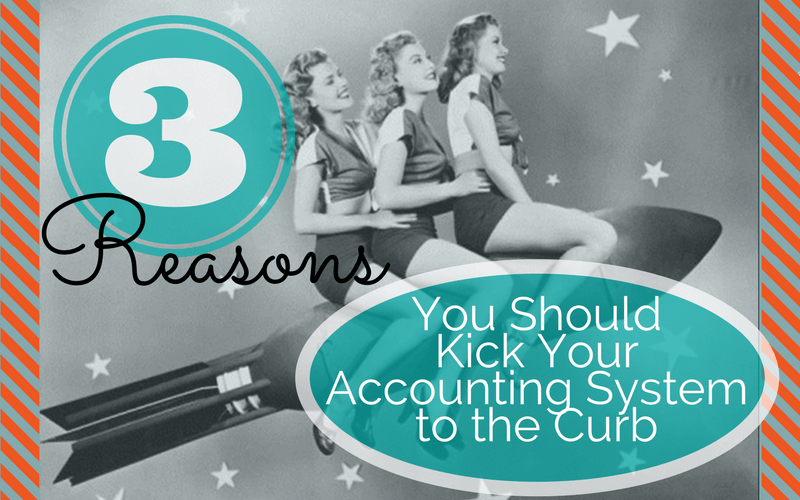
It's time to admit it:
You hate tracking your small business finances.
There, you said it. Breathe.
You hate keeping receipts.
You hate going through your monthly expenses and identifying them one by one.
You hate matching your invoices against your revenue reports.
You hate the nail-biting moment of calculating your profit and loss, wondering if you’ve done as well as you think…assume…are pretty sure…that you did this quarter.
Crazy, right? After all, tracking expenses is what tells you how healthy your business is. So why does it still feel like such a grind? Why do you find reasons to do something…anything…else besides make a monthly date with your money?
Could it be because it’s just boring?
Most small businesses just track money going in and money going out. It’s about as riveting as watching water drip from a faucet…and even less meaningful.
Using financial software only helps to a certain degree. Sure, it makes expense tracking easier. (Not to mention more accurate—a recent study showed that 88% of spreadsheets contain errors…yikes!) But it still requires face time with you and your money, and that’s the part that’s just…yeah, there’s no other word for it…boring.
Money in, money out…what exactly are we looking at, here?
Xero changes all that with a seamless, intuitive system that reveals the real story behind your business. Like taking a drop of that water on a glass slide and putting it under a microscope, you’ll see all kinds of things that you never realized were going on in your financial stream. Best of all, you’ll be able to understand how you can work with those numbers to shape the story you want your business to tell.
1. Xero Helps You Maintain a Strategy for Your Money
Almost nobody likes sitting and staring at numbers. (Except maybe Marilyn–she’s funny like that.) However, when those numbers represent the beating heart of your business, happening in real time, they get a lot more interesting.
The way into this beating heart is your chart of accounts. You’ve heard us talk about this before, but it bears repeating. A chart of accounts is so much more than just a revenue/expense report. Where a spreadsheet is like an on-the-ground view of your financials, a chart of accounts is like a high-res photograph taken from a drone. It shows where each stream is going, along with how it changes along the way.
A chart of accounts lets small business owners create strategies for their year, based on more than just how much they’ve got in the bank at any given time. In other words, you don't have to let the market write your small business' story–you get to be the writer, director, producer and star. As you should be.
Not to brag, but Xero has actually won awards for how easy they've made it to set up and use a chart of accounts.
2. Xero Lives in the Cloud
The only thing that’s more boring as staring at your numbers? Hearing people talk about “the cloud” and nodding like you understand what they mean. (We promise not to get too deep into it here.)
In regard to your finances, though, the cloud is really helpful. Basically, using cloud-based financial software allows you sync up any other software or applications you use for your business with your Xero account.
Use a Square credit card reader? Card swipe sends info straight into Xero.
Paying contractors through PayPal? Xero automatically records the expense for you.
Monitoring inventory in Amazon? Xero integrates directly with your seller account.
You can even invoice people through Xero, if you want. Or you can simply coordinate your existing invoice software with your Xero account. Up to you.
Most of the other accounting software programs out there come as a single package. You drop several hundred dollars on the software, spend hours installing it, spend more hours learning how to use it, spend still more hours avoiding using it…and then begin the process all over again each time the software upgrades. (And don't even get us started on how much space that software takes up in your hard drive.)
But by being cloud-based, Xero doesn't take up any of your computer's memory. Not only that, but it upgrades automatically (with no extra fees) and lets you pay as you go.
Simply put, using software in “the cloud” means your accounting program always stays current and always works.
There are lots of other benefits to working in the cloud. Read about ‘em here.
3. You Get Xero Support
The really great thing about Xero is that they get that you aren’t an accountant! That’s why they’ve made it so easy to get the support you need, from simple “What do I write in this box?” questions, to more involved issues that require an actual person who’s good with numbers.
Here at TBL, for instance, you can get in touch with one of our Xero Certified advisors at any time while working in your Xero chart of accounts. But even if you don't work with us, you can get the support you need from a Xero advisor just by reaching out. They’re really friendly. (Hi, Joel!)
The Bottom Line
There’s a lot of accounting software out there right now. But take it from us—none of them give you the thrilling, hands-on power over your business finances that Xero gives.
